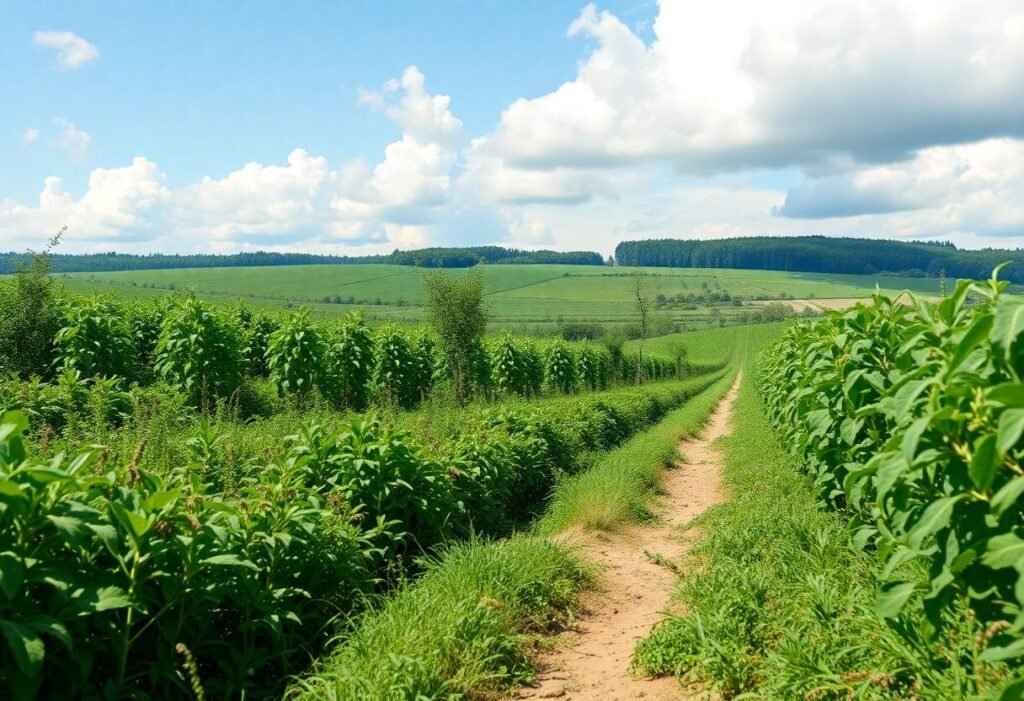As global demands for sustainable practices increase, biomass energy emerges as a cornerstone in supporting innovation in sustainable agriculture. This renewable energy source helps reduce waste, enhance soil health, and generate clean energy, all vital for eco-friendly farming.
The Role of Biomass Energy in Sustainable Agriculture
Biomass energy plays a crucial role in sustainable agriculture by providing a renewable resource that helps to reduce reliance on fossil fuels. By converting organic materials, such as crop residues and livestock waste, into energy, farmers can minimize waste while simultaneously producing the energy needed to power their operations. This not only supports sustainable practices but also promotes innovation in agricultural methods. For instance, anaerobic digestion technology can transform manure into biogas, which can then be used for heating or electricity. This dual benefit of waste management and energy production is a prime example of how biomass helps cultivate a greener future.
Enhancing Soil Quality Through Biomass
Another significant advantage of biomass energy in sustainable agriculture is its positive impact on soil quality. Biomass can be used as a natural fertilizer, enriching the soil with nutrients necessary for healthy crops. When decomposed, biomass materials such as crop residues return essential organic matter to the soil, enhancing its structure and fertility. This process not only supports crop yields but also mitigates erosion and promotes biodiversity in farming ecosystems. Innovative practices like cover cropping can integrate biomass directly into farming systems, showcasing how biomass helps in achieving sustainable agricultural goals.
Reducing Carbon Footprints with Biomass
Biomass energy offers an effective way for farmers to reduce their carbon footprints. By utilizing renewable resources instead of fossil fuels, the agricultural sector can significantly lower greenhouse gas emissions. For example, switching to biomass energy for heating greenhouses or powering machinery can drastically reduce the carbon emissions associated with traditional farming practices. This innovative approach not only benefits the environment but can also enhance a farm’s marketability as consumers increasingly favor sustainably produced goods.
Circular Economy in Agriculture
Biomass energy contributes to the circular economy in agriculture by closing the loop on waste and resource use. Farmers can generate energy from the waste produced on their farms, which can then be reinvested back into their agricultural practices. This innovative model promotes greater efficiency and resource recovery, aligning closely with the principles of sustainability. By adopting biomass energy solutions, farmers can create self-sustaining systems that benefit their operations and the environment.
Government Initiatives and Support
Government initiatives play a pivotal role in advancing the integration of biomass energy into sustainable agriculture. With grants and subsidies aimed at supporting innovative energy solutions, governments encourage farmers to adopt biomass technologies. These programs not only help reduce upfront costs but also provide the necessary training for farmers to successfully implement these practices. Awareness campaigns further educate stakeholders about the benefits of biomass, fostering a culture of sustainability within the agricultural sector.
Future Trends in Biomass and Agriculture
Looking ahead, the relationship between biomass energy and sustainable agriculture is poised for growth. Advancements in technology, such as precision agriculture and improved biomass conversion methods, will enhance the efficiency and viability of biomass as a reliable energy source. As research continues to uncover new applications and benefits, farmers will be better equipped to utilize biomass solutions innovatively. This progressive outlook ensures that biomass energy will remain a key player in the pursuit of sustainable agricultural practices.
Disclaimer: The information provided in this article is for informational purposes only and does not constitute professional advice.





















